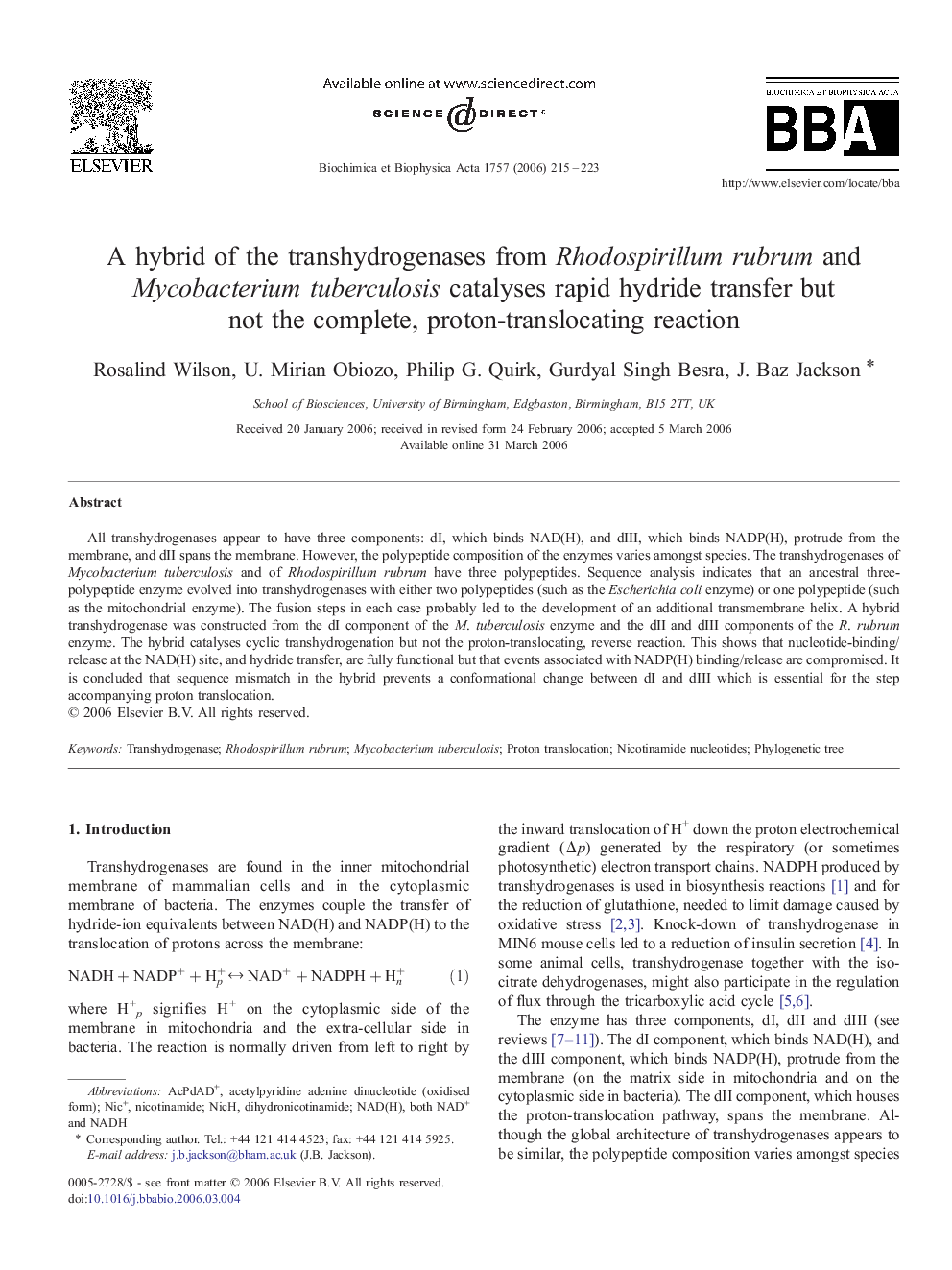| Article ID | Journal | Published Year | Pages | File Type |
|---|---|---|---|---|
| 1943762 | Biochimica et Biophysica Acta (BBA) - Bioenergetics | 2006 | 9 Pages |
All transhydrogenases appear to have three components: dI, which binds NAD(H), and dIII, which binds NADP(H), protrude from the membrane, and dII spans the membrane. However, the polypeptide composition of the enzymes varies amongst species. The transhydrogenases of Mycobacterium tuberculosis and of Rhodospirillum rubrum have three polypeptides. Sequence analysis indicates that an ancestral three-polypeptide enzyme evolved into transhydrogenases with either two polypeptides (such as the Escherichia coli enzyme) or one polypeptide (such as the mitochondrial enzyme). The fusion steps in each case probably led to the development of an additional transmembrane helix. A hybrid transhydrogenase was constructed from the dI component of the M. tuberculosis enzyme and the dII and dIII components of the R. rubrum enzyme. The hybrid catalyses cyclic transhydrogenation but not the proton-translocating, reverse reaction. This shows that nucleotide-binding/release at the NAD(H) site, and hydride transfer, are fully functional but that events associated with NADP(H) binding/release are compromised. It is concluded that sequence mismatch in the hybrid prevents a conformational change between dI and dIII which is essential for the step accompanying proton translocation.
